Chinese traditional clothing | What is Hanfu?
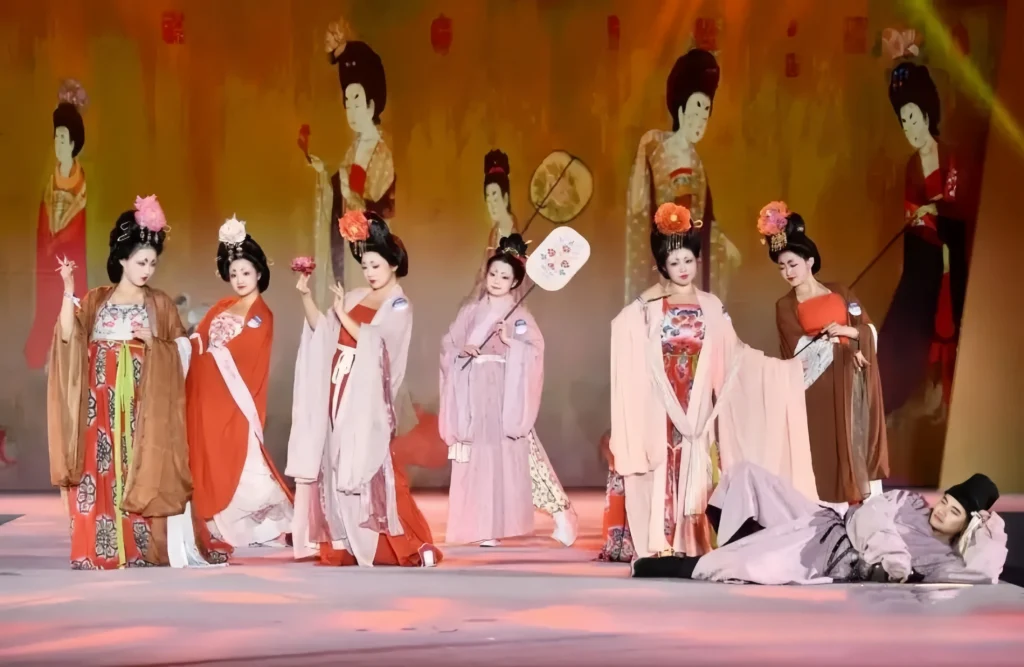
Hanfu, the iconic Chinese traditional clothing, embodies the soul of Han Chinese culture, weaving together history, artistry, and identity. Known as yiguan (ceremonial attire) or hanzhuang (Han dress), Hanfu reflects China’s rich heritage, often called the “land of elegance.” This blog dives into the origins, evolution, and cultural significance of Hanfu, offering insights for enthusiasts and newcomers alike.
As the soul of Chinese fashion, Hanfu embodies centuries of tradition and artistry. Want to uncover its cultural essence? Explore now!
Hanfu: The Heart of Chinese Tradition
Hanfu, the traditional clothing of the Han Chinese, is also called yiguan (ceremonial attire), yishang (garments), or hanzhuang (Han dress). It’s the soul of China’s “land of elegance,” “realm of rituals,” and “realm of splendid embroidery,” showcasing masterful dyeing, weaving, and embroidery crafts. Hanfu carries over 30 Chinese intangible cultural heritages and protected artisanal treasures, weaving beauty and history into every thread.
Historical Origins
Ancient texts suggest the Han Chinese (and their ancestors) had a unique clothing system early on. The Records of the Grand Historian credits the Yellow Emperor with creating garments: “Before the Yellow Emperor, there were no clothes or houses. He built shelters, made clothes, and established burials, saving people from life’s hardships.” Without archaeological evidence from earlier times, hanfu likely first appeared during the Shang dynasty (c. 1600–1046 BCE). Around 5,000 years ago, in the Neolithic Yangshao culture, early agriculture and textile weaving emerged, with linen clothes crafted. The Yellow Emperor’s wife, Leizu, invented sericulture and silk spinning, perfecting clothing styles.
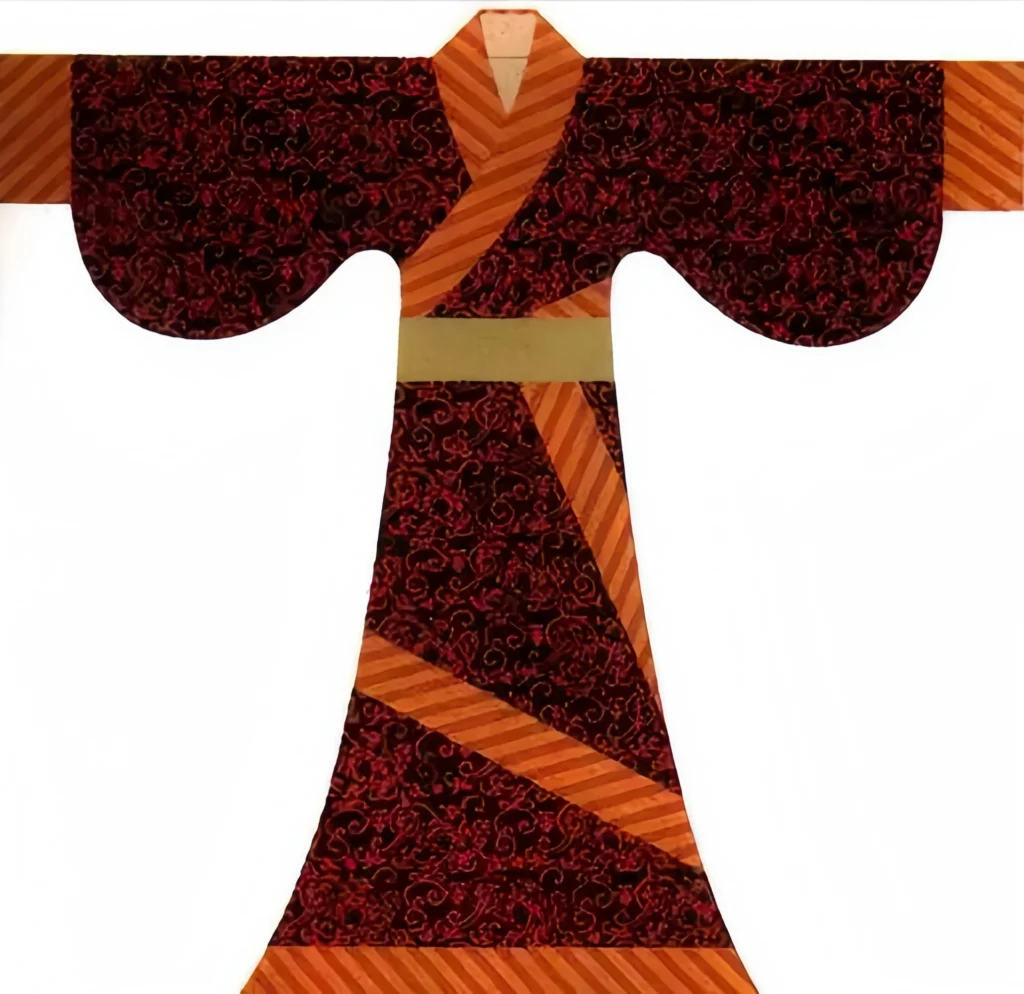
Post-Shang, a formal clothing system took shape. By the Western Zhou dynasty, dress codes solidified, centered on the emperor’s mianfu (ceremonial robes). Confucian ideals like “riding Shang chariots, wearing Zhou crowns” shaped governance. The Spring and Autumn and Warring States periods saw a fashion boom, influenced by political, economic, and philosophical shifts. Diverse styles emerged among states, and the iconic shenyi (deep robe) was born—a versatile, unisex garment that became the era’s hallmark. The shenyi led fashion for centuries, blending style and ritual. Other quirky styles popped up too: musicians wore wind hoods, dancers flaunted foot-long sleeves, hunters donned tight pants, and some rocked owl-horn hats or magpie-tail crowns with short-sleeve, long-skirt outfits.
Qin and Han Dynasties
After unifying China, the Qin dynasty set up clothing rules, scrapping the Zhou’s core six mianfu (ceremonial robes) system for a bold new official dress code. Though dramatic, Qin styles stayed true to Han Chinese roots, carrying into the Western Han.
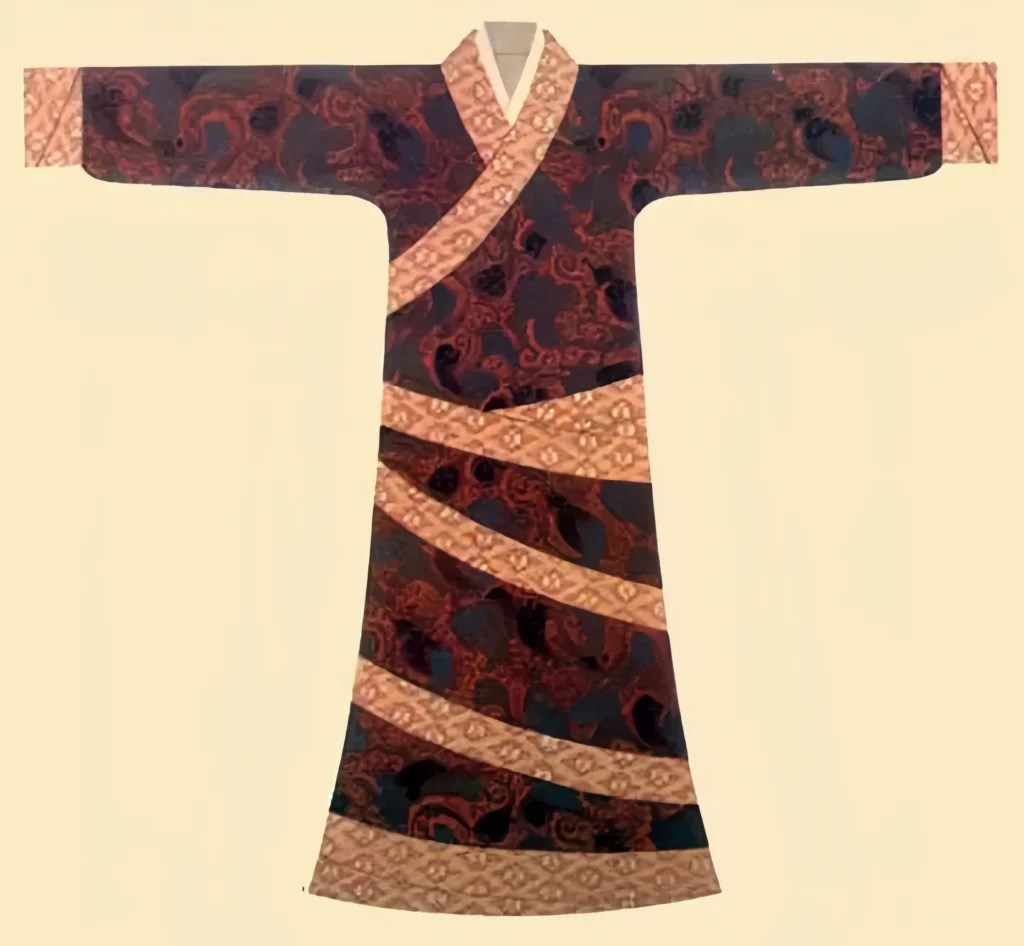
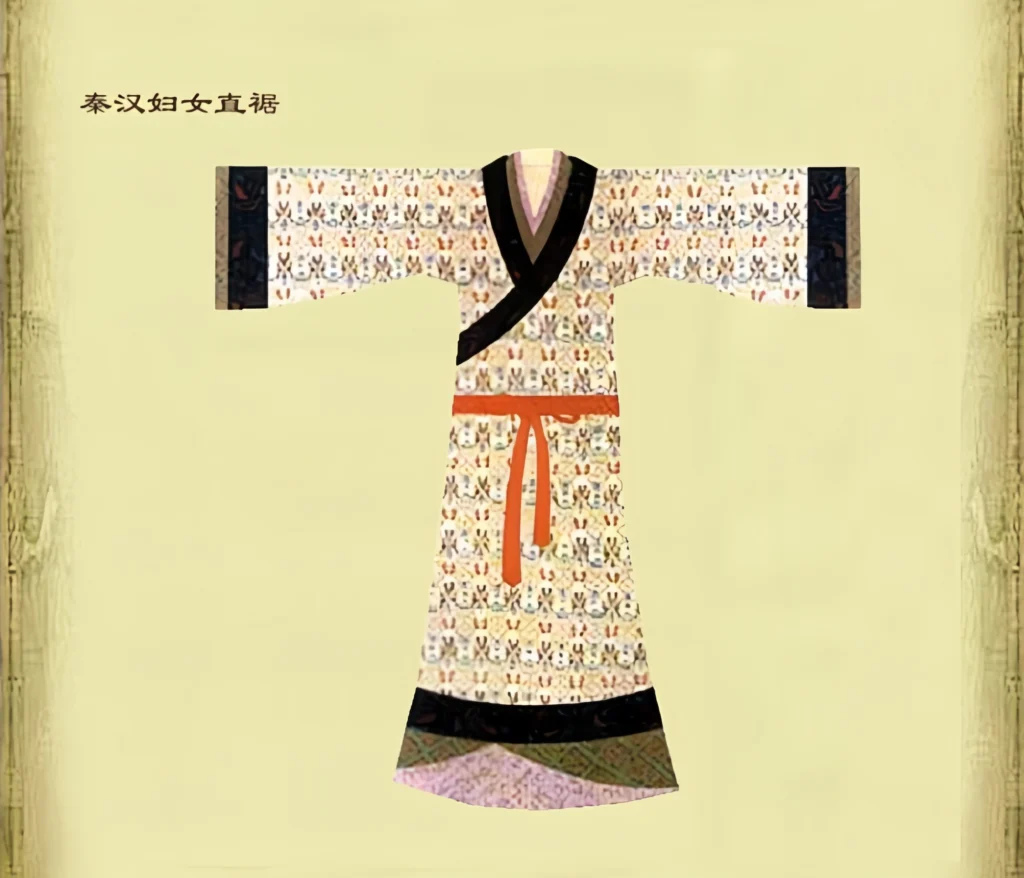
Han clothing stuck with the shenyi (deep robe) vibe for both men and women, layered with zhongyi (middle garments) or chanyi (inner robes). Women’s Han shenyi came in zhiju (straight hem) or quju (curved hem), distinct from Warring States cuts. Men’s shenyi had wide collars to the shoulders, right-over-left closures, and floor-length front hems, with back hems cut in a trapezoid below the knees for mobility, creating a swallowtail shape.
For labor, Han women paired ru (short jackets) with long skirts, adorned with long sashes and open-toe shoes. Men wore ru with duniuku (calf-nose pants) and a cloth skirt overlay, a practical look for all classes. Fun fact: those images of Emperor Wu in a mianfu crown? Not historically accurate! The mianfu system was only revived by Emperor Ming of Eastern Han, who, inspired by Confucian revival post-Emperor Wu’s “dismiss the hundred schools, exalt Confucianism,” restored Zhou-style crowns. Emperor Ming’s reforms marked a cultural comeback, setting a crown-based hierarchy with dignified, elegant styles that shaped hanfu for centuries.
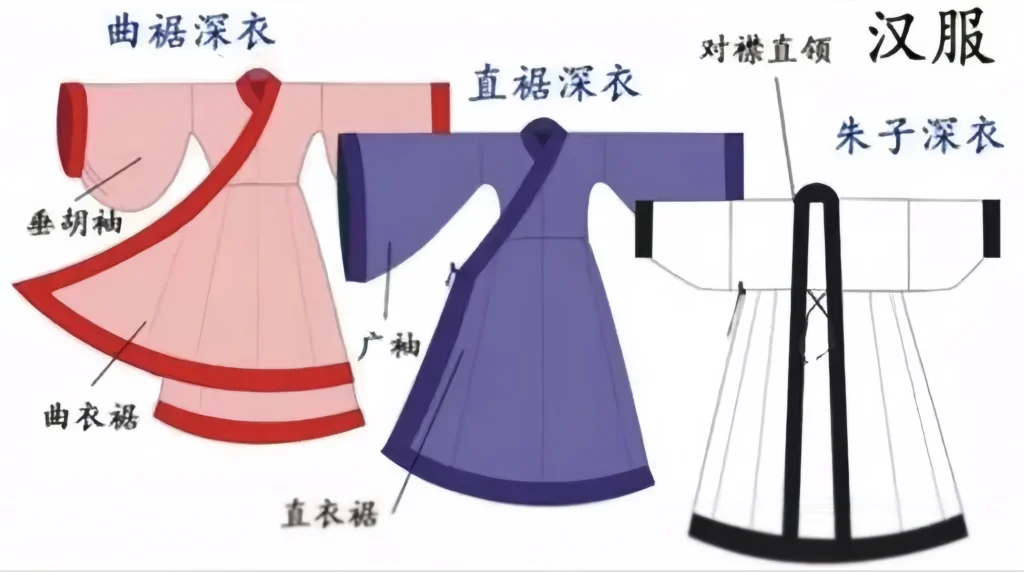
Han men’s go-to was a wide-sleeved robe, either quju pao (curved-hem robe) or zhiju pao (straight-hem robe), worn for most occasions except rituals. A ribbon-ranking system added flair. Women combed hair back into intricate buns, with countless styles, adorned by nobles with buyao (dangling hairpins) or floral pins, while servants wrapped heads in cloth. Women’s formal wear was shenyi (deep robe), distinct from Warring States versions, alongside ruqun (jacket-skirt sets) or pants. Shoes followed strict rank rules.

Wei-Jin and Northern-Southern Dynasties

The Wei-Jin and Northern-Southern Dynasties saw hanfu evolve under political, economic, and cultural shifts, blending Qin-Han traditions with ethnic influences by the Southern and Northern Dynasties. The era’s style? Effortlessly chic and free-spirited. Headwear leaned toward cloth-wrapped turbans, with the longguan (cage crown)—a small cap with a gauze overlay—stealing the spotlight. Men’s shirts had wide, open cuffs, free from hem constraints, while women’s fashion featured fake buns for extra glam. Women typically wore fitted shan (shirts), ao (jackets), or ru (short tops) with flowing skirts, tight at the torso but loose below, with oversized sleeves and floor-length hems for a breezy, elegant vibe.
The Wei-Jin period brought a free-spirited vibe to Hanfu, blending Han traditions with ethnic influences. Women’s fashion featured flowing skirts and oversized sleeves, while men adopted longguan (cage crowns). The Tang Dynasty elevated traditional Han dress with vibrant, rank-based colors and elaborate women’s buns adorned with huadian (forehead stickers). Skirts became high-waisted, creating a graceful silhouette. For a deeper dive into Tang fashion, visit this academic source.
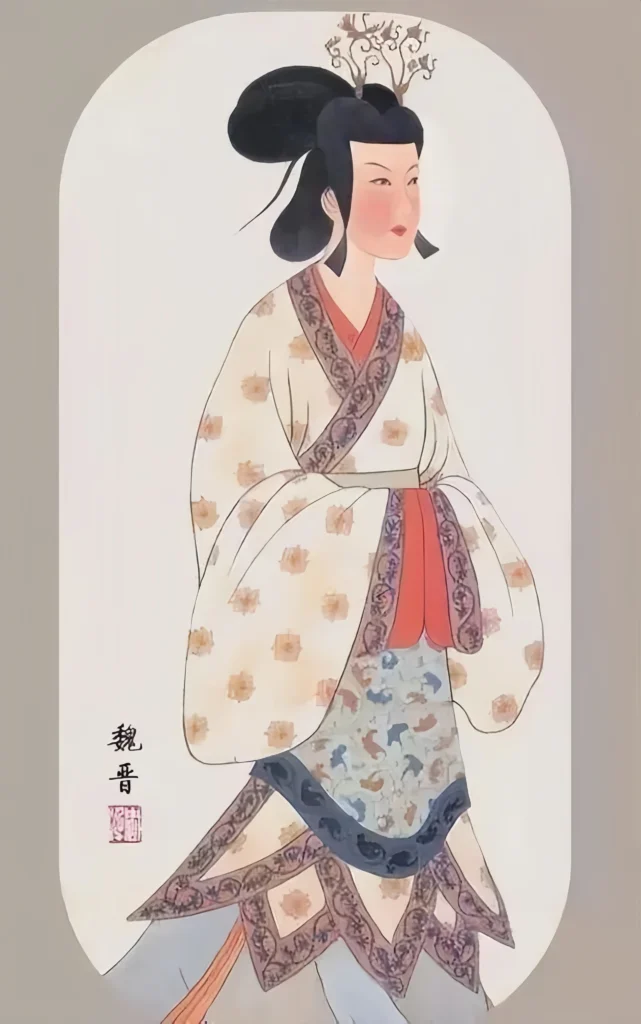
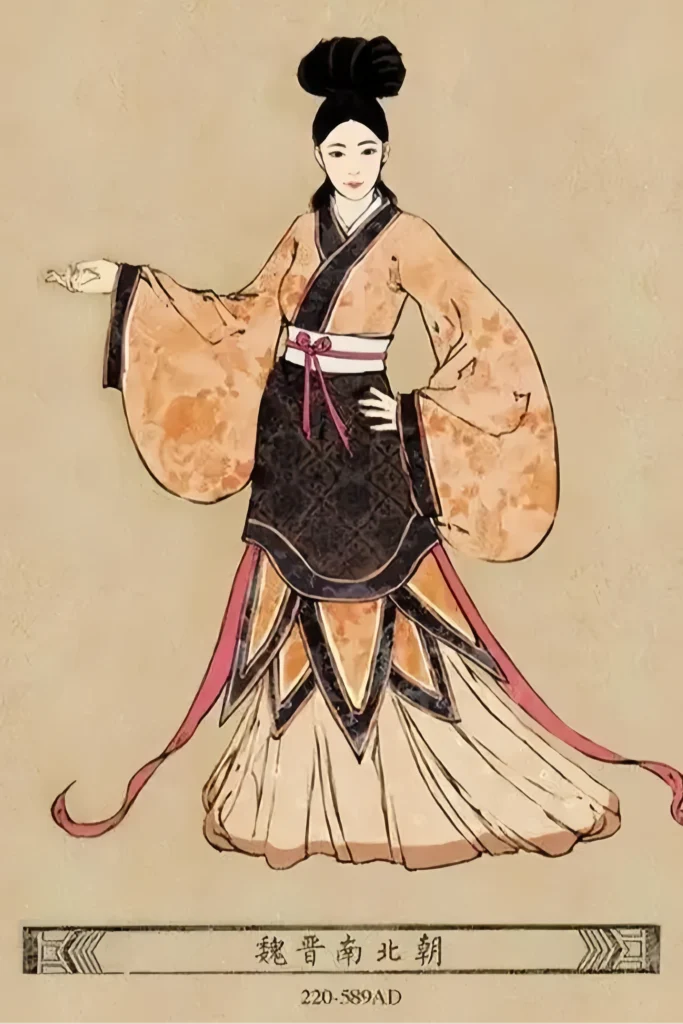
Tang Dynasty
Tang dynasty hanfu bridged past and future, mixing ceremonial fafu (ritual attire like crowns and robes) with everyday gongfu (public attire like round-collar robes, turbans, belts, and boots). Color-coded ranks became official. Women’s buns were elaborate, piled high with gold chai (hair forks), rhinoceros combs, and adorned with goose-yellow makeup, floral huadian (forehead stickers), or beauty spots. Women’s staples were skirts, shirts, and shawls. Early Tang and Sui saw tight, small-sleeve shirts with high-waisted, floor-length skirts tied with ribbons, creating a slim, graceful look. Mid-Tang skirts widened slightly, but the style stayed mostly consistent.

Song Dynasty
Song dynasty hanfu followed Sui-Tang traditions but leaned simpler, stricter, and subtler due to constant internal and external pressures, plus Confucian rationalism’s influence. Soft Tang turbans hardened into wood-framed, lacquered-gauze futou (formal hats). Emperors and nobles wore winged futou, while clerks and servants used wingless ones, and scholars rocked turbans. Men’s round-collar robes dominated, with colors marking rank outside rituals. Women’s late-Tang high buns stayed trendy, adorned with flowers. Skirts were narrower than Tang’s, with fine pleats, paired with front-buttoned shirts worn over skirts.

Yuan Dynasty
The Yuan dynasty, a melting pot of ethnic fusion, reflected this in its clothing. Hanfu retained traits like right-over-left collars but tweaked details and colors, less formal than traditional Han ceremonial wear. As nomadic Mongols, Yuan clothing was practical for riding, with narrow sleeves, pleated waists, and tight fits.
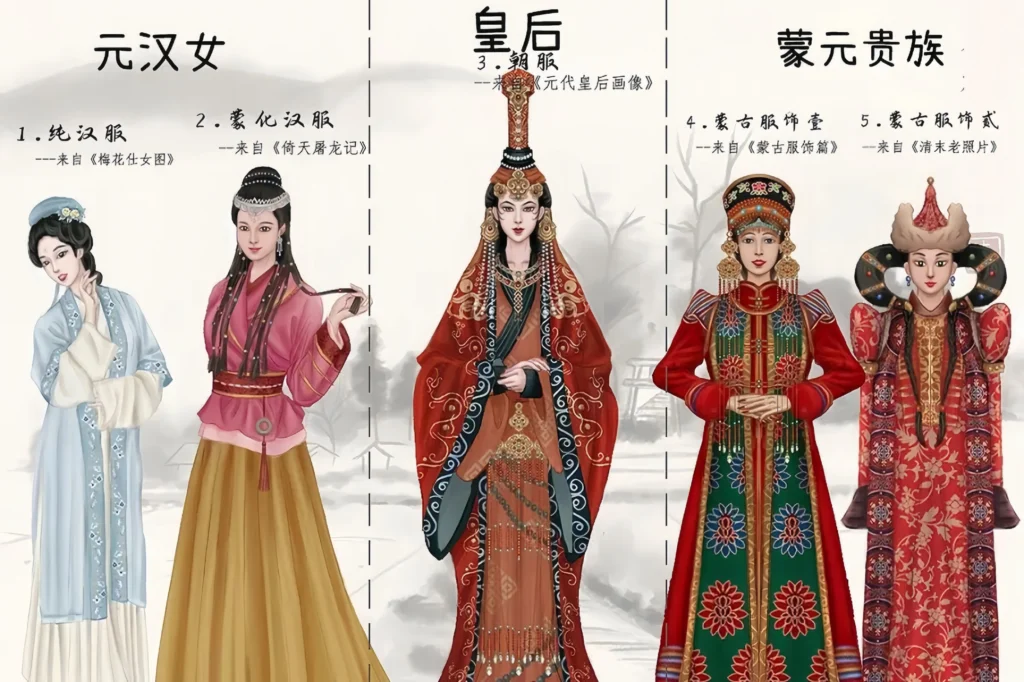
Ming Dynasty

The Ming dynasty aimed to erase Mongol influence, with early decrees to “restore Tang-style clothing.” This wasn’t fully enforced until Hongwu’s 26th year, when dress codes solidified. Cotton cloth became widespread, improving commoners’ clothing. Official headwear adapted Song-Yuan futou with tweaks. Commoners wore long or short robes or skirts, rich in variety, continuing traditional styles. Emperor Hongwu designed two universal hats—the Liuhe yitong mao (six-panel unified cap) and Sifang pingding jin (four-sided stability turban)—for all classes.

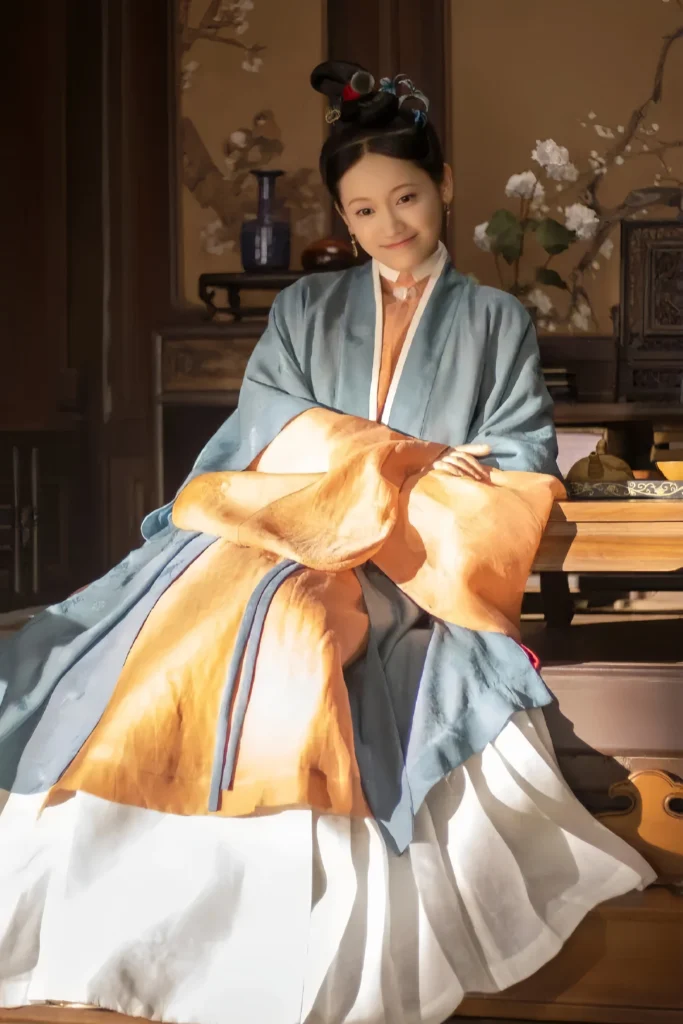
Qing Dynasty
To weaken Han identity and cement Manchu rule, the Qing dynasty enforced “shaving and changing clothes,” punishing Han clothing or hair-braiding with harsh penalties. After taking power, the Manchus mandated Han adoption of Qing styles: “Follow our dynasty’s dress code.” In Shunzhi’s second year, nationwide decrees demanded shaved heads and Manchu attire, with “those keeping Ming styles” facing execution. Countless Han were killed for wearing traditional clothes. Rural farmers, unaware of laws, faced stripping or worse if caught in Ming attire in cities. These brutal policies forced Han clothing changes.
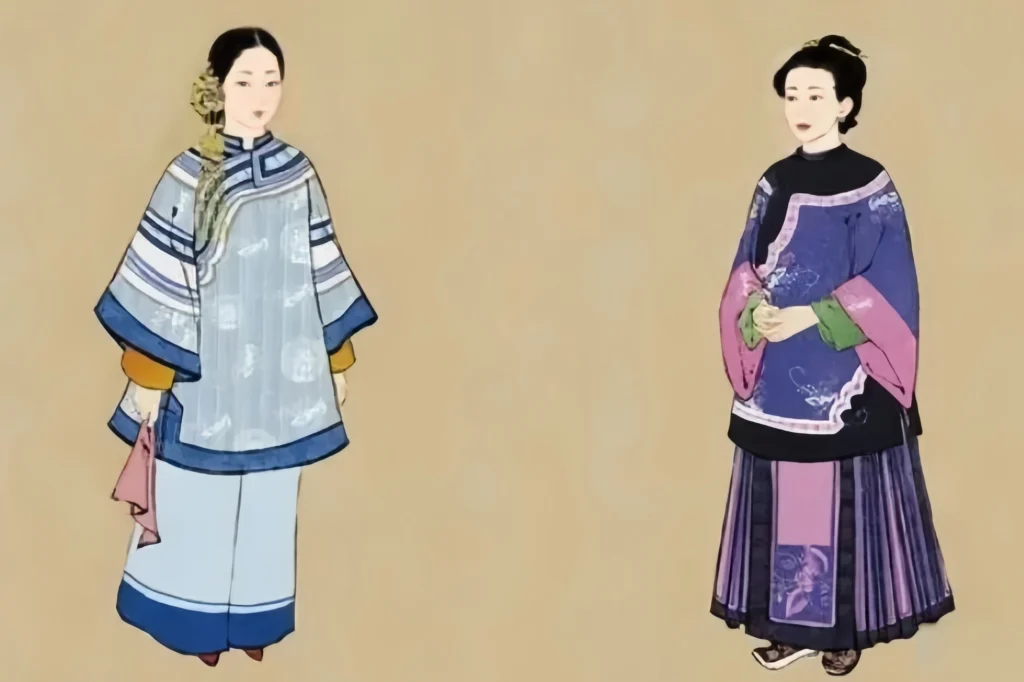
Despite Han resistance, the Qing prioritized stability, allowing minor Hanfu traits to survive. Still, under violent suppression, hanfu largely faded. Over 200 years, Han men’s clothing drew from Manchu styles, with qipao (robes), changshan (long tunics), and magua (jackets) evolving from Manchu roots, not Han traditions.
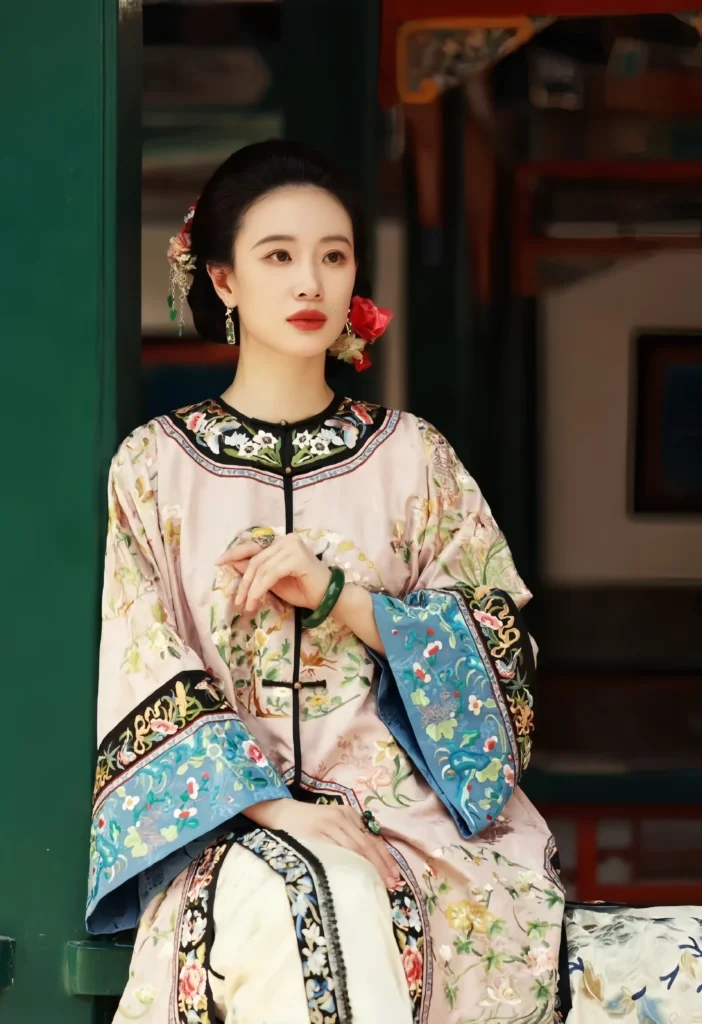
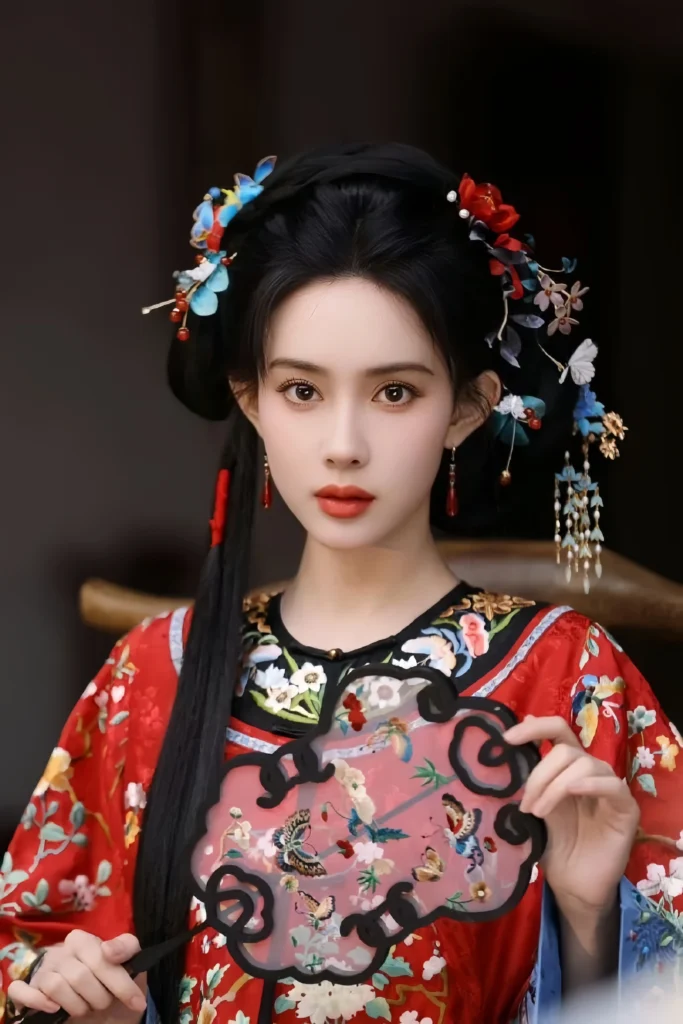
Chinese traditional clothingFashion Meets Modern Revival
Today, Hanfu culture is not just a relic of the past but a vibrant fashion movement. In Luoyi Ancient City, locals and tourists don ruqun (jacket-skirt sets) or quju pao (curved-hem robes) to celebrate this heritage. The city hosts Hanfu festivals, where enthusiasts showcase elaborate designs featuring silk embroidery and flowing sleeves. These events highlight how Hanfu fashion bridges tradition and modernity, with designers reimagining ancient styles for contemporary wardrobes. For tips on styling Hanfu, check out this Hanfu styling guide for inspiration.
Why Hanfu Culture Thrives Here
Luoyi Ancient City’s unique blend of history and accessibility fuels its status as a hub for Hanfu culture. The city’s preservation of ancient structures, like the Wenfeng Pagoda, complements the aesthetic of Chinese traditional clothing, creating an immersive experience. Annual events, such as the Luoyang Peony Festival, often feature Hanfu parades, drawing global visitors. According to China Daily, over 500,000 tourists visited Luoyi in 2024 for its Hanfu-related activities, showcasing its growing popularity. Whether you’re a history buff or a fashion lover, Luoyi’s charm is undeniable.
Known as yiguan, Chinese traditional clothing reflects China’s rich heritage.
Ready to embrace Hanfu? Visit Hanfu retailers for authentic designs and join the movement to celebrate Chinese traditional clothing!





Responses